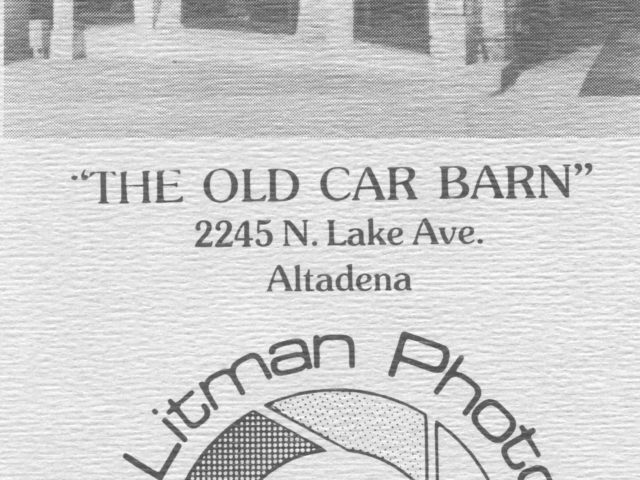Today’s visitors to Mount Lowe can only imagine what its glory days were like. Hikers and bikers still flock to the old resort ruins on trails that follow the route of the Mount Lowe railway. On Echo Mountain remnants of the platform at the top of the Incline, the stairs leading to the hotel or the casino, the power house foundation, the concrete base for the great telescope and the love seat built into a wall below one of the fountains are all visible. Next to a bull wheel once used to power the Incline rail cars there is a plaque designating Mount Lowe as a national historic site. Although the White City is no more, the echo phone still stands, and you can still hear your voice come back to you from the mountains beyond.
The views are still as spectacular as ever. At Inspiration Point, volunteers from the Scenic Mount Lowe Railway Historical Committee, headed by Brian Marcroft and John Harrington, and the National Forest Service have restored the Ramada according to original specifications, rebuilt the sighting tubes, and displayed salvaged railroad equipment. These volunteers have also been instrumental in restoring and maintaining the area’s hiking trails. At the Alpine Tavern site, now Mount Lowe campground, little but foundation remnants and rock retaining walls remain, but kiosks with interpretive signs, erected by the same group of volunteers, help visitors envision the tavern within its majestic setting.
The old substation, now a thrift shop, still stands on Lake Avenue near Mariposa. In 1977 a group of Altadenans, led by the Altadena Historical Society as well as the Altadena Town Council, concerned with the threat of the demolition of the substation, had it entered on the National Register of Historic Places. It was the first Altadena building to be so named. Republic Federal Savings purchased the property and plans for a mini mall incorporating the substation were drawn up.
In 1980 the Jim Dickson Real Estate Company, under the leadership of Astrid Elllersieck, spearheaded an effort leading to complete restoration and earthquake retrofitting of the brick building. It was used as an office for the Jim Dickson Company as well as for the Mount Lowe Railway Museum. Local historian and Mount Lowe expert, Charles Seims, loaned much of his extensive collection of artifacts, advertising art, photographs and other relics to the museum he and realtor Astrid Ellerseick founded. (1986 History of the Pacific Electric Railway Substation no. 8)
When property owner Republic Federal Savings was purchased by Weyerhauser Corp in 198?, the understanding that the Jim Dickson Company had with Republic Federal Savings was canceled. The Jim Dickson Company and the Mount Lowe Museum lost their lease and had to vacate the building. The building sat empty for several years until 1992 when Spencer/Hoskins Associates architectural firm leased it. It served as their corporate headquarters until 2007.
Today the building on still stands on Lake Avenue. On the ceiling of the front office, faded lettering designating the location of the placement of various electric lines used for the railway’s operation is still evident, and the view from the tower is still spectacular.
Although the Mount Lowe Railway itself is long gone, Thaddeus Lowe’s legacy is still alive, thanks to the work of historians, railroad buffs, family members, hiking enthusiasts, area residents and dedicated volunteers. Books, newsletters, documentaries and websites, (including this one) have been inspired by Lowe’s accomplishments.
In the words of Lowe himself: “I lost the road and with it my fortune, because I was ten years ahead of the times of the country and the time for such a venture was not ripe. I have no regrets, for I realize that many millionaires would sacrifice their fortunes to attain a monument for themselves such as Mount Lowe will be to my name when I shall have passed away.”

















